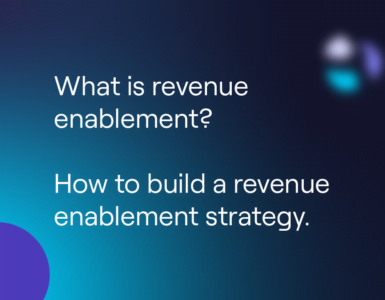
Sales transformation is the process of building or updating the sales operation of a business. Sales transformation is an essential part of digital transformation, but I find that it often gets overlooked because of its specialized nature.
Many companies don’t realize they need a sales team, don’t have the expertise to build one, and some simply outsource it but don’t know how to vet outsourced sales companies due to the lack of sales experience. But sales transformation is essential to certain industries and companies, such as publishing and media, marketing technology and advertising technology, software, social media platforms, agencies, health care and insurance.
I spent six years running the search, content and voice group for two agencies. Knowing what I now know about sales transformation, I can assure you that those agencies would be much more successful if they built and incentivized a sales team.
Having a business development group that relies on requests for proposals (RFPs) from brands and consultants to get them into pitches is like waiting for fish swimming upstream to jump into your mouth. What works for bears during salmon mating season is not a sustainable growth strategy for agencies. Some agencies have found success with that model, but it does not scale and can fail during hard times when fish (clients) are scarce.
Instead, here are a few tips to help start your sales transformation.
1. Determine Whether To Outsource Or Build In-House
The decision to outsource your sales operation or build an in-house team is a big one. This really comes down to your resources and which model is more cost-effective for you. You may choose to outsource sales to a partner for the following reasons:
• You need to scale your sales, and building an in-house team is too expensive.
• You don’t have experience in building sales teams.
• You are launching a new product or entering a new market.
• You need to push your internal sales team. Complacency can kill sales teams, and sometimes outside help can remove excuses and reinvigorate your team.
2. Experience Is Priceless
Hiring an experienced sales director for your company is priceless because they will help you navigate the process of building an internal sales team or choosing an experienced outsourced partner. If you do this without an experienced sales lead, you may lose money upfront due to the steep learning curve, and then on the back end when you have no sales.
3. Software
Leveraging software is essential for building and scaling a successful sales operation. There are two types of tools that are essential to a salesperson’s tool kit: a customer relationship management (CRM) software, like Salesforce, HubSpot or an equivalent; and a sales engagement platform for prospecting, setting meetings and tracking activity that leads up to a sale.
(Full disclosure: My company, JumpCrew, is a vendor of both Salesforce and HubSpot.)
4. Training
You will need a long-term training solution to make sure that your salespeople learn quickly. Having an enterprise learning platform that is customized for your business will help you scale and grow your sales teams.
5. Optimize The Sales Process
It’s important to implement a repeatable sales process. Here are the basic steps:
• Prepare: Find information about your potential prospects. Collect social information, emails, phone numbers, etc.
• Prospect: Reach out to potential clients to see if they are interested in taking meetings to talk about your product or service.
• Qualify: Find out quickly if the prospect is actually the right fit for your product or service. Do they have problems that your product or service solves? If the answer is yes, then set up a pitch. If the answer is no, then let them be on their way. Don’t waste your time or theirs.
• Pitch: This is when you put a proposal together and pitch the client a solution that will solve their problems. Pitching is important because you should also use this time to ask more questions in case you have to adjust the final contract.
• Close: Closers get prospects to sign contracts and pay.
• Collect: I added collections to the process because people sometimes forget that the point of selling is to get paid. If you sell something for a million dollars and never get paid, then it’s not a sale. I would advise that you have a separate collections team. I would also make sure that your pitch team and customer success team introduce your collections team during the first onboarding meeting. This way, the new client knows to expect to be billed and called by the collections team. It also allows you to double-check that you have the right contact information for the billing team. Usually, your main client is not the person who pays the bills.
• Check-In: The closer should check in with the client once a quarter to make sure that things are going well and the team is solving their problems. This is important for customer satisfaction and makes it easier to upsell or cross-sell new products and services. It is ultimately more inexpensive for your company to upsell clients and grow organically than it is to bring in net new clients.
Make sure that you have your junior salespeople doing the preparing, prospecting and qualifying. Then, have experienced salespeople do the pitching and closing. Once you have this process locked down, you need to build dashboards in your CRM to track performance.
Don’t Forget To Optimize
Once you’ve taken the five steps above, optimize your process for high qualify and conversion rates, a 100% collection rate, a high upsell rate and a low churn rate.
Sales transformation is not easy, but I hope this helps you to get a sense of everything you need to do to build a successful sales team or outsource your sales operations to kick-start your company’s sales transformation.
[“source=forbes”]




















































